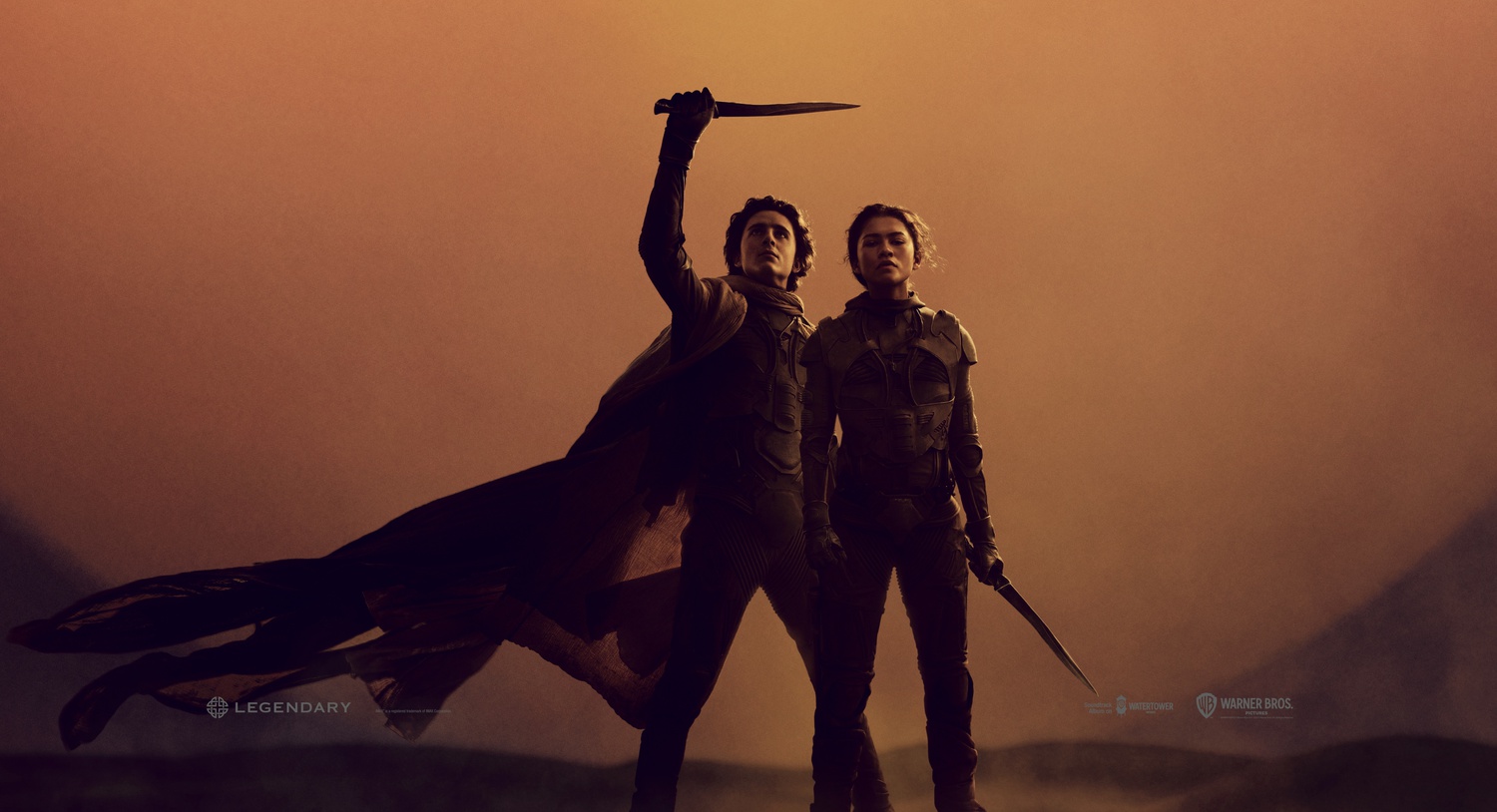
News
Summers Will Not Finish Semester of Teaching as Harvard Investigates Epstein Ties

News
Harvard College Students Report Favoring Divestment from Israel in HUA Survey

News
‘He Should Resign’: Harvard Undergrads Take Hard Line Against Summers Over Epstein Scandal

News
Harvard To Launch New Investigation Into Epstein’s Ties to Summers, Other University Affiliates

News
Harvard Students To Vote on Divestment From Israel in Inaugural HUA Election Survey
‘Dune: Part Two’: A Monument of Modern Cinema
Dir. Denis Villenueve — 5 Stars

Warning: This review contains minor spoilers.
It’s a very rare thing when a major, studio-produced sequel fully realizes a director’s vision. In an age where IMDb reports 221 sequel releases in the next two years, one could look at the poster for “Dune: Part Two” and expect it to follow the same algorithm, but the reality is that filmgoers can expect to leave the theater with the full weight of masterful cinema echoing in their heads.
As the sequel to the first film, released in 2021, “Dune: Part Two” follows Paul Atreides (Timotheé Chalamet) and his mother, Lady Jessica (Rebecca Ferguson), as they integrate with the desert-dwelling Fremen after their House is decimated by the House of Harkonnen. The Fremen inhabit the beautiful planet of Arrakis, home to the most coveted resource in “Dune” — spice, which becomes a symbol for imperial greed and galactic geopolitics as the Great Houses wish to exploit this natural resource. “Power over spice is power of all” booms over the IMAX speakers in the sonorous language of the Sardaukar, the ruthless imperial army — setting in motion the thematic framework to “Dune: Part Two.”
Director Denis Villenueve masters the seemingly impossible scope of Frank Herbert’s 1965 novel, upon which the “Dune” films are based. With the sheer amount of worldbuilding necessary to establish an immersive experience, an almost three-hour film almost seems too short. Yet Villenueve is no ordinary director. Every second of “Dune: Part Two” is laced with visible intent because every technical and artistic aspect of the film perfectly works together. The key to this synthesis is Villenueve’s talent for balancing scope with intimacy. What differentiates his “Dune” series from other blockbusters today is his hyper awareness that immersion comes from connections between seeming opposites.
The amount of close-ups that pervade the film gives a visual accessibility to a removed reality, as the nuance captured in characters’ faces upholds the narrative’s emotional centerpiece. This skillful cinematography extends to Villenueve’s playful lens that blurs or silhouettes pivotal moments, transforming the audience from spectators to contributors. A grand wide shot of Paul, standing high and mighty on a cliff, rallying the Fremen against the Emperor, is shot with Paul as a blurred silhouette — as though encouraging viewers to deduce the spectral magnitude of his presence.
The pure scope of “Dune: Part Two” roots the film in both stillness and transcendence. Villenueve’s collaboration with the king of grand soundtracks, Hans Zimmer, shocks every pivotal scene deep into the bones. Add this duo to legions of armed Fremen riding Lovecraftian sandworms out of a desert storm into battle, and you have the definition of monumental cinema. The attention to detail in the design of each planet, especially the Harkonnen planet Giedi Prime, helms the film’s grandeur. Production designer Patrice Vermette perfectly externalizes the harkonnens’ abject malignance through imposing pseudo-Dadaist architecture. Even the fireworks on this cursed planet are fluorescent ink explosions that add to the film’s sublime visual fabric.
The new additions to the cast, no matter how big their fan base may be compared to their screen time, also deliver all-around memorable roles. Florence Pugh as the calculating Princess Irulan emotionally dominates with her masterful acting. Austin Butler as the Harkonnen Feyd-Rautha, the dark mirror of Paul Atreides, finally manages to escape the grip of Elvis to prove his multifaceted talents. Yet the film would not be complete without the powerhouse performances of Zendaya and Timothée Chalamet.
While some critiqued the first film for Paul’s lackluster character arc as a conventional hero, “Dune: Part Two” masterfully exploits this superficiality by embodying Herbert’s critique of what “The Chosen One” truly represents. Paul is faced with a dual problem: to fulfill his prophecy of being the Lisan al Gaib — a messiah hailed by the Fremen — or liberate the Fremen from their continuous exploitation. Zendaya prays for the latter as her role of Chani, a Fremen, develops from a TikTok-ified role to a revolutionary. As she sees Paul sway to the seductions of praise, she cries the film’s pivotal line: “This prophecy is how they enslave us.”
Herbert saw prophesied figures as a vehicle of oppression itself, the worship of one individual constructing a jail that cognitively bars the masses where the masses are cognitively barred from collective liberation. Villenueve’s direction, paired with Zendaya and Chalamet’s masterful performances, perfectly deliver Herbert’s thematic fascinations. There have been very few cinematic experiences that have felt larger than the screen could handle, yet “Dune: Part Two” sets a new bar for what blockbuster cinema can be.
Want to keep up with breaking news? Subscribe to our email newsletter.
